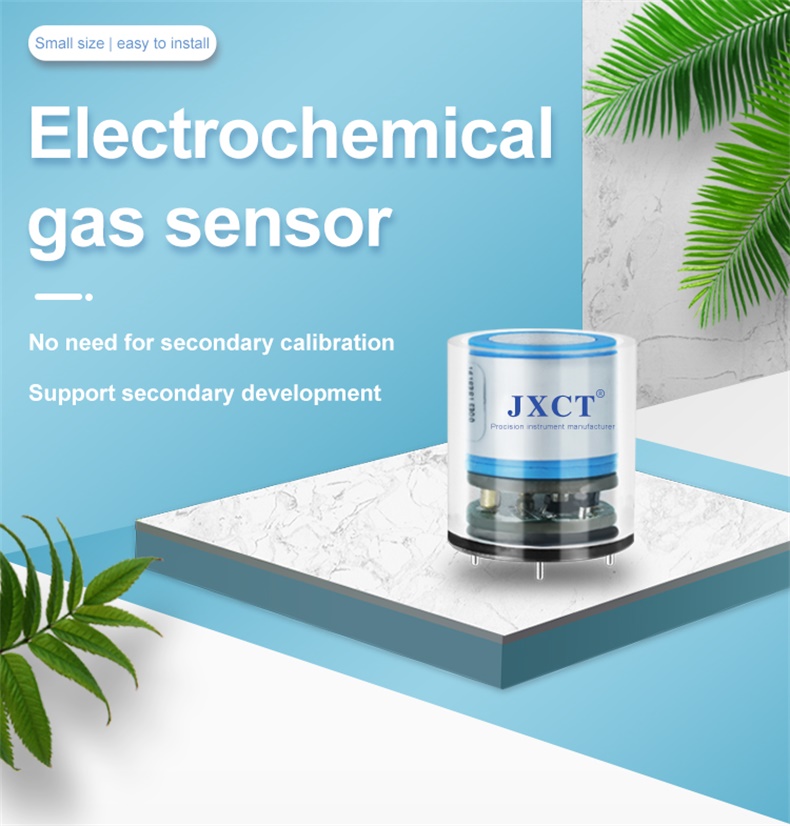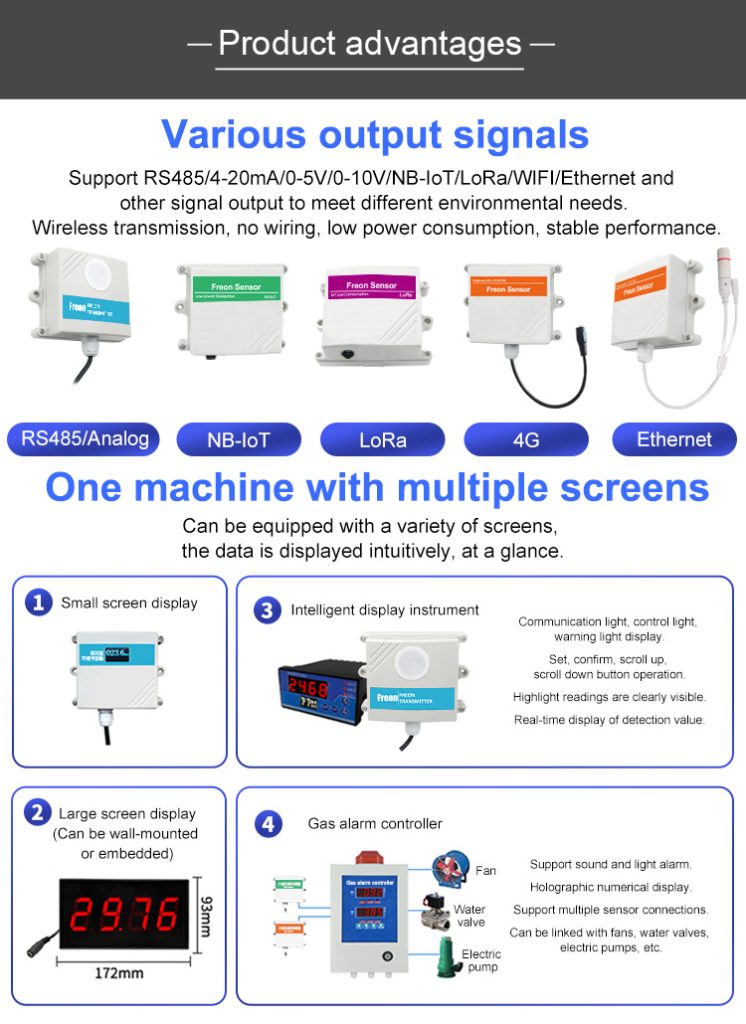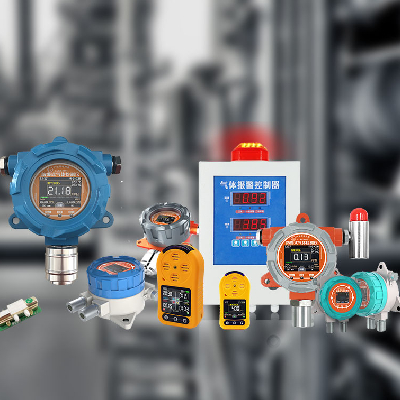Gas sensors play a crucial role in industrial applications, providing essential monitoring and detection capabilities for a wide range of gases and vapors. From ensuring the safety of workers to maintaining the integrity of production processes, gas sensors are indispensable tools that contribute to operational efficiency, environmental protection, and regulatory compliance in industrial settings. This essay will explore the significance of gas sensors in industrial applications, their diverse uses, technological advancements, and the impact on safety, productivity, and sustainability.

Industrial environments encompass a broad spectrum of activities, including manufacturing, chemical processing, oil and gas production, power generation, and more. Within these settings, the presence of various gases, such as toxic, flammable, or inert gases, poses inherent risks to personnel, equipment, and the surrounding environment. Gas sensor serve as early warning systems, capable of detecting and measuring the concentration of gases in the air, thereby alerting operators to potential hazards and enabling timely intervention.
Function of gas sensors

The primary function of gas sensor in industrial applications is to ensure the safety of workers and facilities. For instance, in chemical plants and refineries, where exposure to toxic gases can have severe health consequences, gas sensors are critical for monitoring air quality and providing warnings in the event of hazardous gas releases. By continuously monitoring for the presence of toxic gases, such as hydrogen sulfide, ammonia, or chlorine, these sensors help prevent occupational illnesses and enable rapid evacuation and emergency response in the event of a gas leak.
In addition to protecting human health, gas sensors also play a vital role in safeguarding industrial assets and infrastructure. In environments where flammable gases are present, such as in oil and gas facilities or paint spray booths, the risk of fire or explosion is a constant concern. Gas sensors designed to detect flammable gases, such as methane, propane, or hydrogen, provide essential early warning capabilities, allowing operators to take preventive measures, such as shutting down equipment or activating fire suppression systems, to mitigate the risk of ignition and potential catastrophic events.
Furthermore, gas sensor contribute to the optimization of industrial processes by enabling real-time monitoring and control of gas concentrations. In manufacturing operations, for example, the precise measurement of gases such as oxygen, nitrogen, or carbon dioxide is essential for maintaining the desired atmospheric conditions in controlled environments, such as in food packaging or semiconductor manufacturing. Gas detectors with high accuracy and reliability ensure that process parameters are maintained within specified ranges, thereby enhancing product quality, reducing waste, and improving operational efficiency.
Advancements in gas sensor technology
The technological advancements in gas sensor technology have significantly expanded the capabilities and applications of these devices in industrial settings. Traditional gas sensors, such as electrochemical, catalytic bead, infrared sensors, have been widely used for detecting specific gases based on their chemical properties or absorption characteristics. However, recent developments in sensor materials, miniaturization, and connectivity have led to the emergence of advanced gas sensor technologies that offer enhanced performance, sensitivity, and versatility.
One notable advancement is the development of solid-state gas sensor, which rely on semiconductor materials to detect gases through changes in electrical conductivity. Solid-state sensors offer several advantages, including faster response times, lower power consumption, and greater resistance to environmental factors. These attributes make solid-state gas sensors well-suited for demanding industrial environments, where reliability and durability are paramount.
Another significant trend in gas sensor technology is the integration of wireless connectivity and data analytics capabilities, enabling remote monitoring and real-time data analysis. Wireless gas detectors with IoT (Internet of Things) capabilities can be deployed across industrial facilities, allowing for centralized monitoring of gas concentrations and trends. This not only streamlines the monitoring process but also facilitates predictive maintenance, enabling proactive interventions based on data-driven insights.
Moreover, advancements in sensor miniaturization and cost reduction have led to the proliferation of portable and handheld gas sensors, which offer flexibility in industrial applications. These portable devices are invaluable for conducting spot checks, leak detection, and confined space monitoring, providing personnel with the means to assess gas hazards in diverse work environments, such as storage tanks, pipelines, or maintenance areas.
The impact of gas detectors on industrial safety, productivity, and sustainability cannot be overstated. By providing early detection of gas leaks, monitoring air quality, and enabling proactive measures, gas sensor contribute to a safer and healthier work environment. The ability to detect flammable gases helps prevent fires and explosions, protecting personnel and assets. Additionally, the use of gas sensors in process monitoring and control supports operational efficiency, quality assurance, and regulatory compliance.
From an environmental standpoint, gas sensor play a crucial role in emissions monitoring and pollution prevention. In industries subject to air quality regulations, such as power plants, refineries, and chemical facilities, gas sensors monitor and report emissions of pollutants, such as sulfur dioxide, nitrogen oxides. By accurately quantifying gas emissions, these sensors aid in compliance with environmental regulations and support efforts to minimize the impact of industrial activities on air quality and public health.
Furthermore, the integration of gas detectors into industrial automation and control systems contributes to the overall sustainability of industrial operations. By enabling real-time feedback on gas concentrations, these sensors facilitate the optimization of energy usage, process efficiency, and resource conservation. For example, in HVAC systems, gas sensors help regulate ventilation rates based on indoor air quality, leading to energy savings.
Conclusion
In conclusion, gas sensors are indispensable tools in industrial applications, serving critical functions in safety, process control, environmental compliance, and sustainability. The evolution of gas sensor technology has expanded their capabilities, enabling advanced features such as wireless connectivity, remote monitoring, and predictive maintenance. As industrial operations continue to evolve, the demand for reliable, accurate, and versatile gas sensors will remain essential for ensuring the well-being of workers, protecting assets, and minimizing the environmental impact of industrial activities. The ongoing innovation in gas sensor technology promises to further enhance their effectiveness and applicability, reinforcing their status as indispensable components of industrial safety and process management.
